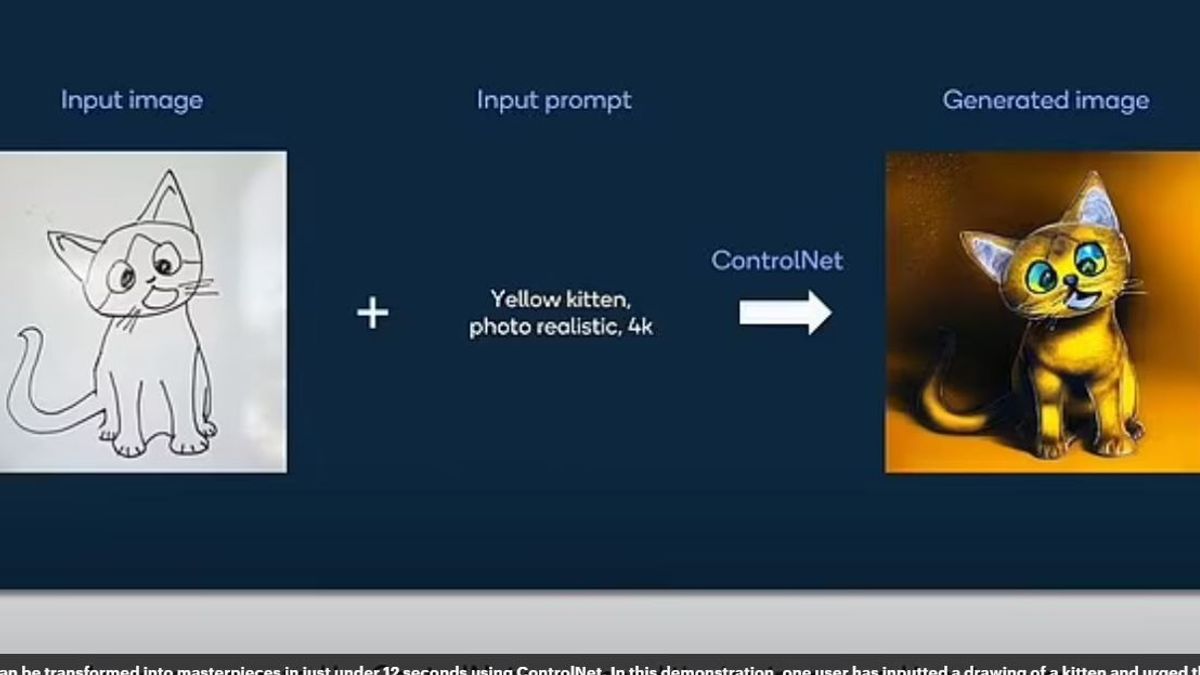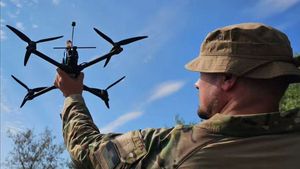JAKARTA - Technology is growing rapidly with increasingly sophisticated artificial intelligence (AI). This time, technology company Qualcomm revealed a revolutionary software called ControlNet that can turn bad doodle images into outstanding works of art.
ControlNet, announced by Qualcomm last week, is a tool capable of processing images based on instructions given in just 12 seconds. The novelty of ControlNet is that it does not require an internet connection to work and will most likely be the main app on smartphones.
The company guarantees that all images generated through ControlNet will be private and no data is stored in third-party cloud.
"Generative AI has changed the art world by disrupting traditional ways of creating content. ControlNet allows users to enter additional image and image text descriptions to control the generating process," said a Qualcomm spokesperson explaining about ControlNet.
ControlNet is one of many similar AI tools commonly referred to as language-visital models (LVMs). These models combine image encoders and text encoders to read instructions given by users before generating new content.
Although ControlNet is not yet available for public use, demonstrations have shown that this tool can produce artwork from text descriptions, images, or both simultaneously.
Selected images can be in the form of personal images or photos, while text inputs can show the style or "material" that AI wants to use to produce new versions. For example, it can use water paint or oil paint to produce images, and the results can be displayed in 4K resolutions.
This process runs on the device used, so Qualcomm claims that processing time and power consumption are also significantly reduced.
"The images are produced in less than 12 seconds to provide reliable and consistent interactive experiences. The AI on the device provides an advantage in terms of global cost, performance, personalization, privacy and security," a Qualcomm spokesperson added.
The launch of Qualcomm's new product comes after controversy over the use of image models generated by AI, with many artists expressing their copyright concerns.
The case was triggered by Disney illustrator Holie Mengert after learning that her work was used without permission to train a new model in Canada.
Many people then debated the ethics of using artwork to train AI, while the legality of such actions was still a gray area in various countries.
Qualcomm has not disclosed which picture is used to train ControlNet. To get more information.
ControlNet promises attractive potential for art enthusiasts and technology users. Using advanced artificial intelligence, this tool can turn simple doodle images into impressive works of art. This provides an opportunity for people who have an interest in art but may have limited image skills.
Although this technology offers many benefits, there are still questions about the ethics of using artwork to train AI. The presence of ControlNet and similar tools that rely on artificial intelligence sparked debate about copyright and the use of artwork without permission. This shows the need for regulatory involvement and ethics in the development and use of AI technology involving artwork.
The presence of ControlNet as an innovative AI tool provides hope for art enthusiasts to realize their artwork without limitations on technical capabilities. However, along with the development of this kind of technology, it is important for industry, regulators, and the public to consider ethical and legal implications related to the use of artwork and personal data in the development of AI technology.
The English, Chinese, Japanese, Arabic, and French versions are automatically generated by the AI. So there may still be inaccuracies in translating, please always see Indonesian as our main language. (system supported by DigitalSiber.id)










